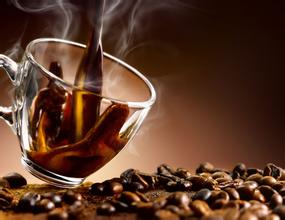Introduction to the flavor and taste characteristics of the fruity Yegashifi coffee manor in Ethiopia
Ethiopia is located at 6 ~ 9 degrees north latitude and 34 ~ 40 degrees east longitude. It is located in the center of the Horn of Africa and is a landlocked country. It is bordered by Djibouti and Somalia to the east, Sudan to the northwest, Eritrea to the north and Kenya to the south. [5]
Topography
There are mainly mountain plateaus in Ethiopia, and the central and western regions are the main part of the plateau, accounting for 2% of the total. The East African Rift Valley runs through the whole territory, with an average elevation of nearly 3000 meters, which is known as the "roof of Africa". The terrain around the plateau is gradually declining. The Darol depression in the north fell to 113 meters below sea level, the lowest point in the country. The coast of the Red Sea is a narrow banded plain. Deserts and semi-deserts in the north, south and north-east account for about 25% of the country's area. The Dashan peak of the Ximen Mountains is 4623 meters above sea level, which is the highest peak in Ethiopia. [6]
Climate
Due to the large difference between latitude span and altitude, Ethiopia is located in the tropics, but the temperature is uneven in different places. The heavy rainy season is from June to September, the dry season is from October to January, and the light rainy season is from February to May. Due to uneven rainfall in different seasons and regions, local drought is easy to occur. The temperature ranges from 9.7 ℃ to 25.5 ℃. The average annual temperature is 16 ℃. [5]
Hydrology
There are many rivers and lakes in the territory, where the Blue Nile originates, but the utilization rate is less than 5%. [1]
Natural resources editor
Proven deposits include gold, platinum, nickel, copper, iron, coal, tantalum, silicon, potash, phosphate, marble, limestone, oil and natural gas. Companies from Malaysia, Saudi Arabia, Britain, Sudan, Jordan and other countries have carried out oil and gas exploration and development in Ethiopia. Rich in water resources, known as the "East African Water Tower"
Yejassefi's coffee trees were planted by European monks (a bit like Belgian monks growing wheat to brew beer) and were later transferred to farmers or cooperatives. Yejia Chuefei is actually constructed by surrounding coffee communities or cooperatives, including Edido Idido, Hafusa Harfusa, Hama Hama and Biloya near Fog Valley Misty valley, all washed with water, but there are also a small number of off-product beans engraved with sun to enhance the charming fruit aroma and mellow thickness. These mountain villages are foggy, spring-like all year round, with a gentle breeze in summer, cool but not hot, rain but not damp, and no cold damage in winter, giving birth to a unique citrus and floral flavor strictly. Yegashafi is a by-product of the Sidamo province of Sidamo, Ethiopia, located in the northwest of Sidamo, on the mountain side of the lake, it is one of the highest coffee-producing areas in Ethiopia. However, the mode of production and flavor here are so prominent that Ethiopian coffee farmers compete to be proud of the flavor of their coffee, so they are independent from Sidamo and have their own style. Coffee trees in Africa's most famous producing areas are mostly planted in farmers' own backyards or mixed with other crops in the fields, with little yield per household, which is a typical pastoral coffee. Yega Xuefei won the prize beans almost from the above-mentioned coffee villages and communities. The so-called "Yega Chuefei" refers to the strong aromas of jasmine, lemon or lime acid, as well as peach, almond or tea. The phrase "coffee entrance, flowers in full bloom" is best described, just as flowers promote the comfort of taste buds and olfactory cells in the nasal cavity. In addition to the fragrance of flowers, the delicate thickness of body, like silk massage in the mouth, feels wonderful. At present, many coffee chemists begin to study the microclimate and soil and water around Yega Xuefei, in order to sum up the planting equation of fine coffee. Yega Xuefei can be divided into two categories according to the different treatment methods of raw coffee beans: category An is the washing method, and the grade standard is the American Fine Coffee Association SCAA, which is divided into Gr-1 and Gr-2. The smaller the Arabic number, the higher the grade, and the style of G1 Yega Chefe is distinct. The blend of citrus and floral flavors in the coffee liquid is an irresistible delicacy. Category B is sun-treated coffee raw beans, and the grade is Gr-1,Gr-3,Gr-4,Gr-5. Similarly, the highest grade of G1 sun Yega Chuefei is fruity. Opening the freshly roasted G1 sun Yega Chevy coffee bag can subvert everyone's original understanding of coffee. Only those who have tasted the highest grade sun Yega Chevy will believe that coffee is a kind of fruit.

Important Notice :
前街咖啡 FrontStreet Coffee has moved to new addredd:
FrontStreet Coffee Address: 315,Donghua East Road,GuangZhou
Tel:020 38364473
- Prev

Unique soft floral flavor of Yega Chuefei Adordo Coffee. Introduction to the characteristics of the manor area.
Since EGF came to power in 2000, it has established a federal regime based on regional national autonomy, focusing on economic development and focusing on the coordination of relations among stability, development and national unity. [1] on December 8, 1994, the Ethiopian Constituent Assembly adopted the fourth Constitution, the Constitution of the Federal Democratic Republic of Ethiopia, which entered into force on 22 August of the following year. The new constitution consists of 11 chapters and 106 articles
- Next

Introduction to Dominica Santo Domingo Coffee Flavor Manor with soft floral aroma
The increasing number of Kind Kaddura species was hit hard by the hurricane in 1998, resulting in countless losses, so it was common for the local area to switch to Kaddura species with lower tree height and higher harvest. Although Baraona still has Tibica coffee, its harvest has been greatly reduced because of the annual hurricane damage. The climatic conditions of planting Cultivation are the same as those of the highlands in Dominica.
Related
- Detailed explanation of Jadeite planting Land in Panamanian Jadeite Manor introduction to the grading system of Jadeite competitive bidding, Red bid, Green bid and Rose Summer
- Story of Coffee planting in Brenka region of Costa Rica Stonehenge Manor anaerobic heavy honey treatment of flavor mouth
- What's on the barrel of Blue Mountain Coffee beans?
- Can American coffee also pull flowers? How to use hot American style to pull out a good-looking pattern?
- Can you make a cold extract with coffee beans? What is the right proportion for cold-extracted coffee formula?
- Indonesian PWN Gold Mandrine Coffee Origin Features Flavor How to Chong? Mandolin coffee is American.
- A brief introduction to the flavor characteristics of Brazilian yellow bourbon coffee beans
- What is the effect of different water quality on the flavor of cold-extracted coffee? What kind of water is best for brewing coffee?
- Why do you think of Rose Summer whenever you mention Panamanian coffee?
- Introduction to the characteristics of authentic blue mountain coffee bean producing areas? What is the CIB Coffee Authority in Jamaica?

